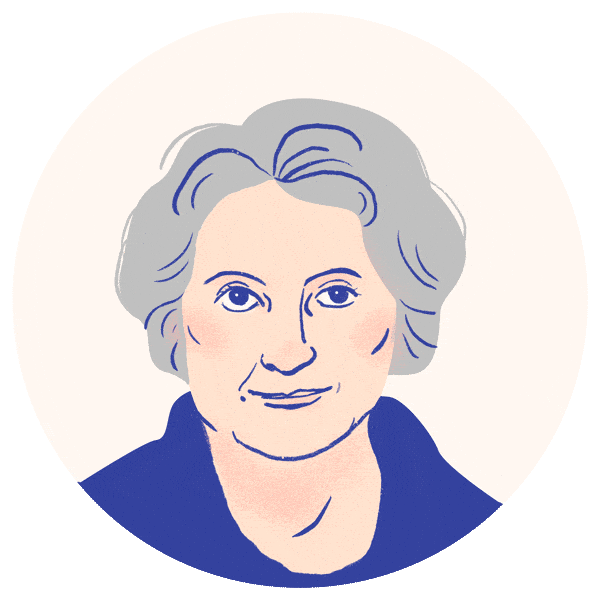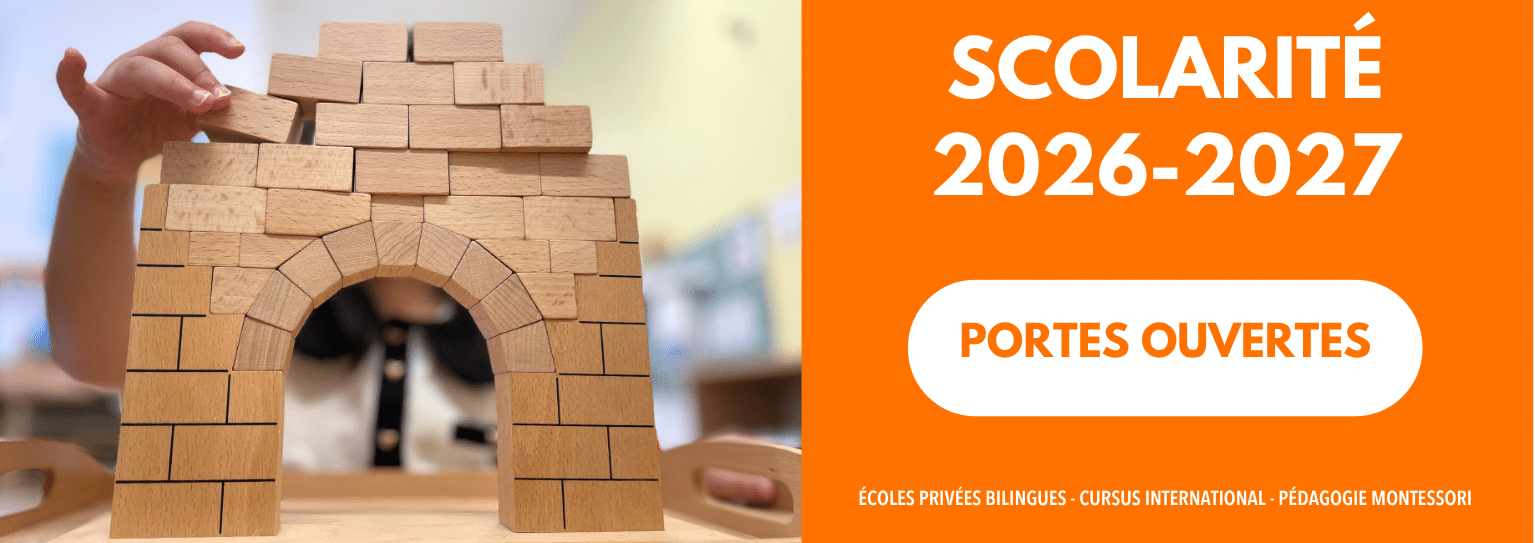
The Montessori Method
Encourage self-confidence and autonomy, while allowing children to develop at their own pace and in complete freedom.
Maria Montessori
a champion of children's rights. "Educating is not training," she advocated.
In January 1907, she opened the first Casa dei Bambini (Children's House) in Rome.
What made Montessori so revolutionary? She provided children with appropriate learning materials, but most of all, she advocated giving them the freedom to choose the activities they want to do, for as long as they want to do them.
Montessori was surprised to find that young children were capable of remarkable levels of concentration and self-discipline.
From this observation she developed the Montessori Method: if children are in an appropriate and prepared environment, guided by a teacher who adapts to and stimulates them, they learn by themselves, at their own pace.

Four years to explore more than 300 Montessori activities
During this coherent learning cycle, the child discovers the material as a whole. They learn alongside two qualified educators, one English-speaking and one French-speaking, who take it in turns to teach them how to use the material, which is divided into 5 large work areas.
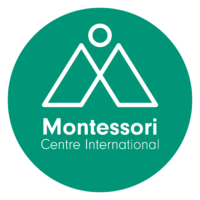
Certification from MCI (Montessori Center International) Center International)
Invited by 123 mon école, the MCI spent a few months in our schools to evaluate our professional practices, the diversity of our teaching materials, our bilingual environment and our relations with families.
We are proud of this accreditation, which confirms the quality of the work carried out in our schools.
Montessori education around the world
For almost 100 years, the Montessori pedagogy has been recognized worldwide for its ability to develop children's full potential, to serve their curious and joyful nature.
Montessori education is practiced widely all over the world.
The basics and main principles of Montessori pedagogy
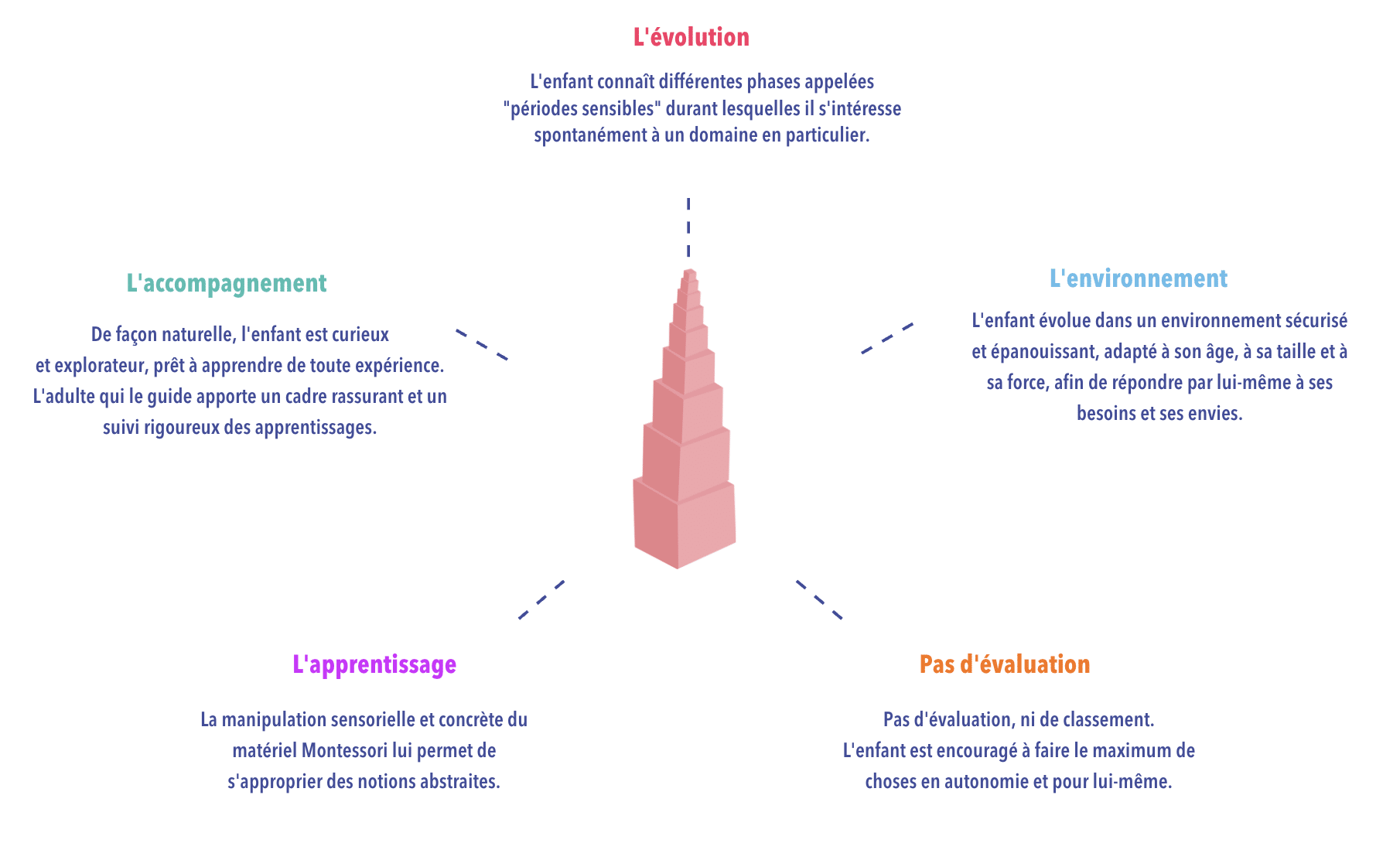
Within the same class, ages are mixed, in kindergarten from 3 to 6 years old, to encourage mutual support andlearning between children.
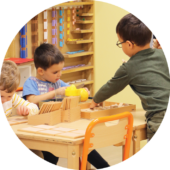
The environment must be structured, clean and tidy.
Furniture is adapted to the child's strength and size.
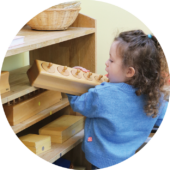
The equipment remains accessible at all times, so that children can handle it independently. They have freedom of choice.
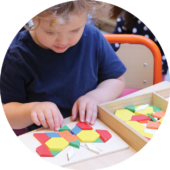
Materials must be respected and handled with care.
It is simple, beautiful and noble.
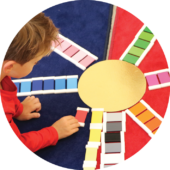
The adult acts as a guide, observing and allowing the child to experiment, while remaining available to him or her.
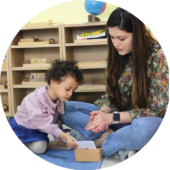
Children need to manipulate objects to organize and coordinate their movements.

The practice of Montessori pedagogy at 123 mon école :
a great adventure between educators and children!

The 5 Montessori areas in videos
Practical life
Developing motor skills and independence
Perfecting movement
Preparing for writing
Taking care of yourself and your environment
Doing useful things every day
Sensory life
Refining the senses
Develop fine and gross motor skills
Introduce writing and mathematics
Refine senses
Become aware of your environment
The language
Reading and writing
Learn to read and write
Enrich vocabulary and oral expression
Use precise vocabulary to name everything
Improving communication
Mathematics
Algebra and geometry
Learn to count and understand the value of numbers
Access abstract concepts such as whole numbers, 4 operations, decimal numbers, fractions, etc.
Approach the concepts of areas, volumes, geometric shapes...
Discovering the world
Experiment and discover
Explore geography, botany, the animal world, nature and science
Please add an image
Please add an image
Please add an image
Please add an image
Please add an image


